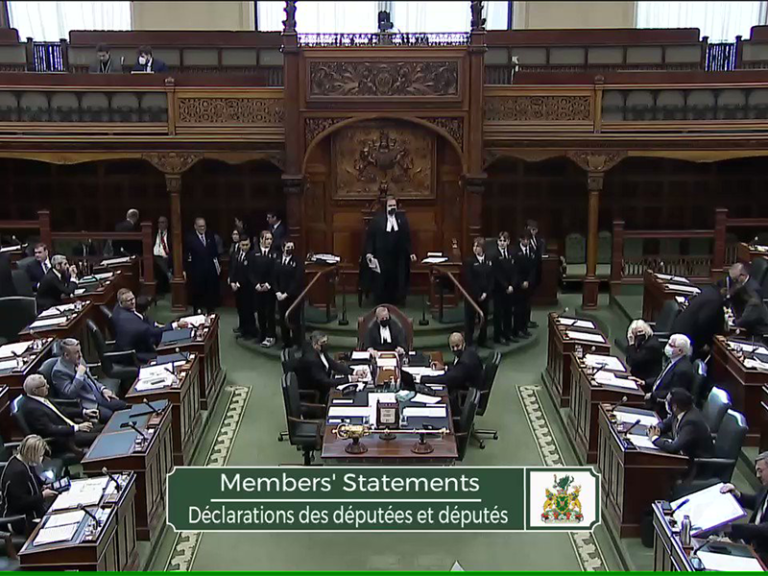By Deborah O’Connor
This year the Northumberland Community Legal Centre focused its Justice Forum event on the current incarnation of the ongoing review of Ontario’s welfare system. While speakers brought participants up to speed on some of the proposals for change, input was collected from people there who have experience with the Ontario Disability Support Program and Ontario Works, the two separate programs that provide welfare in the province. For both advocates and system users, the latest review being conducted by the Social Assistance Review Commission is the last in a long line of reviews and reports that date back to the late 1980s.
For veterans like this writer, the Transition Report produced then was the best of the bunch since it resulted in the one change that was desperately needed, a substantial rate increase. Improvements were also made to allow recipients to keep more of their earned income, a move providing both work experience and a slightly more comfortable life. Since then it’s been all downhill as the follow-up reports provided in the next few years were never acted on as the recession of the early nineties saw welfare cops hired instead of support workers.
The Harris cuts of l995 were the biggest blow, made on ideological grounds rather than any strategy to reduce poverty. Instead, a determined plan to just reduce the numbers of people on welfare, the rules were re-written and made extremely punitive and the new disability program that emerged was designed to keep people out. One of the biggest changes was the elimination of the long term Family Benefits program for single parents whose childcare responsibilities kept them at home. By the end of the old millennium, those parents had all been dumped down to the new Ontario Works program paid at a much lower monthly rate and required to aggressively look for work. Workfare was in vogue although the concept was never properly implemented and eventually withered away although it’s still on the books.
Not much has changed since then, although some of the more outrageous rules were modified over time. The welfare rates, though, have remained stagnant and have lost some 40 percent of their value since 1995. A single person then would get $520 monthly, down from a high of $663 before the cuts. Now, with the miserly one percent raise that starts in December this year, the single rate on Ontario Works will be $599. For a couple that new rate will be $1,032. A single parent with two children will be receiving $1,165 plus whatever amount they qualify to get with the Ontario Child Benefit. Everyone on social assistance gets to keep half of what they earn, the other half is taken from their cheque each month. Losing a job for any reason, deserved or not, can result in harsh financial penalties or denial of an application. Asset levels are still abysmally low, so some applicants are forced to cash them in before they can qualify for benefits, even if it’s only for a short while. The anonymous snitch line is still there, and benefits can be terminated before an investigation is undertaken. If you’re on welfare, it’s always guilty until proven innocent, and you never feel secure because they have 800 assorted reasons to not provide your cheque next month. And landlords can start the eviction process when the rent is one day late.
For people with disabilities, the rates and supports are better. It’s not easy to access the program and the denial rate for applications remains high. The appeal process is cumbersome and slow, with the Social Benefits Tribunal itself reporting that people without legal representation at their hearings lose much more often. For people with mental health issues impairing their stability, the process is nearly impossible to complete successfully without an advocate, and there are not nearly enough of them around to meet the need. Their monthly rate will rise to $1,064 for December if they’re single, and about 75 per cent of them are. A disabled single parent with two kids will receive $1,742 plus child benefits. Recipients benefit financially by working with a special employment benefit of $100 a month along with the half of their paycheques they can keep. They are not required to work and the Employments Supports component of the program isn’t adequate anyway, failing to provide the specialized equipment and training that’s needed for the disabled to enter the workforce. Still, unlike those condemned to the ranks of Ontario Works, people on disability have some chance of managing their lives in a minimal, no-frills kind of way. The various food banks and emergency services are still a routine part of life for them too, though. Nobody gets a free ride on this train.
That, in a nutshell, is where the welfare system sits right now. In July of 2012 the Social Assistance Review Commission will release its final report, and then the real waiting will begin. In the next column we’ll explore the Commission’s mandate, and review the findings made in their discussion paper released this past June, along with some of the concerns that have emerged about their direction.


